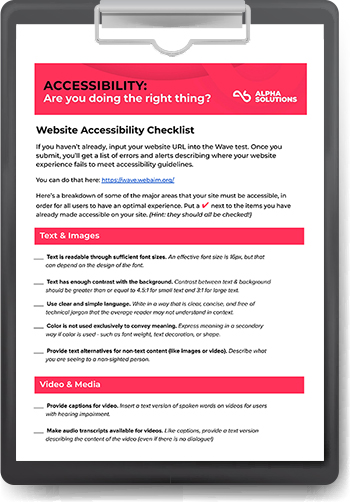The primary goal of an effective customer experience strategy is to enhance customer satisfaction, loyalty, and advocacy for improved business performance and profitability.
Your customer experience strategy should be tailored to:
-
your vision,
-
the unique quirks of your business, and
-
the needs of your audience.
Ultimately, your customer experience should also align your business goals with whatever it is that your customers want.
So, let’s dive into the nitty-gritty, starting with your unique business case for enhanced customer experience.
Understanding Your Business Case
Before you start dreaming up a customer experience strategy, get familiar with your unique business case.

How to make a business case for your customer experience strategy:
📊 Current State Assessment
Evaluate your existing customer experience, including strengths, weaknesses, and pain points. This helps you identify areas that require improvement and sets the baseline against which the impact of your customer experience strategy will be measured.
🎯 Determine Your Objectives
Clearly define the goals and objectives that your customer experience strategy aims to achieve. Create SMART goals (specific, measurable, attainable, relevant, and time-bound) for best results. Once you've decided on your outcomes, share them with your team.
🛒 Identify Proposed Initiatives
Create a detailed description of the initiatives and activities that will be implemented to enhance your specific customer experience journey.
This may include:
-
improving customer service processes
-
optimizing digital touchpoints
-
personalizing interactions
-
enhancing product/service features
|
How accessible is your website? Get our free accessibility checklist to guide your efforts for getting compliant and doing the right thing. Plus, receive real feedback from us to help you on your next steps. |
🛍️Detailed List Of Benefits
Conduct a comprehensive analysis of the benefits you expect after the implementation of your new customer experience strategy.
These may include:
-
increased customer satisfaction and loyalty
-
higher customer lifetime value
-
improved customer retention rates
-
more positive online reviews and word-of-mouth referrals
💰 Projected Financial Impact
Create a projection of the anticipated financial impact of a successful customer experience strategy, including estimated costs, expected revenue growth, and return on investment (ROI).
This analysis helps demonstrate the financial viability and potential profitability of the proposed initiatives, which will be important to decision-makers.
🚫 Prepare For Risk
Take the time to identify and assess potential risks and challenges associated with implementing your customer experience strategy. By anticipating these risks you'll be better positioned to minimize their impact.
🧭Implementation Plan
Design a detailed roadmap outlining the key steps, timelines, and responsibilities for implementing your customer experience strategy.
Now you’ve made your case for a more effective customer experience.
Next, how do you create the best possible customer experience for your unique business case?
In this digital age, consumers are fickle and customer expectations are constantly changing. It’s important to keep your finger on the pulse of your customers’ behavior so you’re aware of their evolving needs and expectations.
This might mean digging into market research, rolling out customer surveys, or deep-diving into your customer experience analytics.
Understanding customer expectations allows you to design a customer experience strategy that not only meets but exceeds these expectations, leading to customers who rave about you to their friends and followers.
To curate the best possible digital customer experience, your vision should line up business outcomes with customer expectations.
Your vision should be customer-centric, focused on delivering value while also hitting your business objectives. One way to make your online sales channels more customer-centric is by making the switch to composable technology.
Composable Technology: A Game-Changer for Customer Experience
Composable technology is a modular approach to technology.
Instead of a monolithic system that does everything (but sometimes not very well), composable technology allows you to pick and choose different features and components and 'compose' them to form a system that fits your needs while impressing your customers.
Here are some common reasons why businesses switch to composable architecture:
💪 FLEXIBILITY
One of the main advantages of composable technology is its flexibility. With composable technology behind your customer experience software, you can add new features to your business very quickly… without having to overhaul your entire system.
Composable technology affords you a level of speed and adaptability that will allow you to rapidly respond to changing customer expectations, creating a digital customer experience that keeps you on the cutting edge.
❄️ PERSONALIZATION
Composable technology allows for a high degree of personalization, letting you tailor your digital customer experience to the specific needs and preferences of different customer segments.
Personalization is hugely powerful today, with buyers being used to online shopping experiences that are tailored to their unique needs and expect a certain level of personalization.
Composable technology helps you deliver on this expectation, enhancing customer satisfaction and increasing brand loyalty.
📈 SCALABILITY
Composable technology scales with your brand. As your business grows and evolves, with composable architecture you can easily add or modify components to keep up with your expanding needs.
This level of scalability ensures that your digital customer experience remains seamless and efficient, no matter how much your business grows.
🧱 INTEGRATIONS
With composable technology, you can easily connect various components of your business from your customer relationship management (CRM) system to your e-commerce platform. This streamlined integration enhances the customer experience by providing a unified, cohesive journey with your brand across all touchpoints.
Composable technology provides you with a flexible, scalable, and customizable tool to enhance your digital customer experience. By leveraging the power of composable, your business can stay agile and responsive, adapting to changing customer expectations and delivering a personalized, seamless customer experience.
Now that you've…
-
made a business case for your customer experience strategy
-
put some thought into your customers’ expectations
-
thought about adapting composable technology…
it’s time to design your digital customer experience.

Designing a Knockout Digital Customer Experience in Five Steps:
STEP 1: Know Your Audience
Your customer experience strategy will be stronger if you understand what motivates the people who buy from you! Get to know your customers by crafting buyer persona profiles. These are in-depth profiles of your ideal (most high value) customers, including details about their desires, their needs, and their behaviors. Lululemon is a great example of a brand with a solid buyer persona.
STEP 2: Map Your Customer Experience Journey
A customer journey map outlines your customer's experience with your business, from awareness to retention. By mapping this journey, you can spot any gaps, redundancies, or rough patches and smooth them out for a seamless user experience.
STEP 3: Identify Your Touchpoints
Every way customers can connect with your business is a touchpoint - your website, your social media accounts, and even your customer service emails. Identify these pivotal points and polish them till they shine. Leverage the power of composable technology to implement/enhance functions and features of your website such as adding more powerful search capabilities, subscription options, or a help desk.
STEP 4: Communicate Your CX Marketing Strategy
Your employees are your brand’s greatest asses and they are crucial to delivering a positive customer experience. Treat your employees well and empower them with the skills, tools, and knowledge to be customer experience champions.
STEP 5: Adjust As Necessary
Finally, do regular pulse checks of your CX strategy. Use key performance indicators (KPIs) like customer satisfaction scores or customer retention rates to see how you're doing. Keep an eye on your customer experience matrics so you can adjust as necessary.
Conclusion
Your digital customer experience design should align with your unique business case, your vision, and customer expectations. It is not one-off project.
CX marketing is a never-ending journey of fine-tuning, research, feedback, and dedication to improvement. And when done right, a digital customer experience can transform your business.








